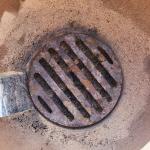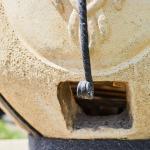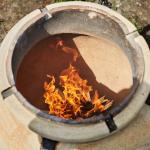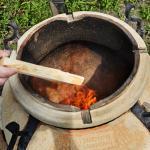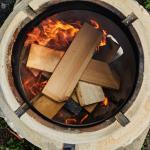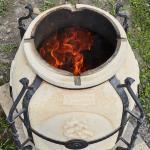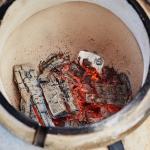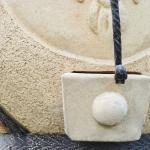Congratulations! You have purchased an Artisan tandoor oven, your gateway to the exotic flavors of the ancient Silk Road.
Proper care and maintenance will ensure that your Artisan tandoor will last you for many years to come.
Let’s get to know how to use a Tandoor for the first time
Rules also apply if the tandoor has been exposed to frost or there has been a long break in use
IMPORTANT! PLEASE READ BEFORE USING.
- The first time using your Artisan Tandoor, please ensure that you gradually increase the temperature to condition the interior of the Tandoor.
- This step is crucial in ensuring the longevity of your Artisan Tandoor. This can be achieved by starting with a very small fire and slowly adding fuel to gradually increase the amount of heat inside the Tandoor.
- You may notice some hairline cracks forming during conditioning but don’t be alarmed, this is normal and will not interfere with the performance or longevity of the Tandoor.
- When the Tandoor cools down, the hairline cracks will barely be noticeable. They are essential in allowing the ceramic body of your Tandoor to breathe.
- Please see the following link for some more information (thermal expansion and contraction). The slower you increase the temperature inside the Tandoor during your first use, the fewer hairline cracks will develop.
- Never place the lid on the Tandoor while the flames are visible, the lid should only be placed on the Tandoor when the flames have dissipated and it is ready for cooking. For hinged lid models, please ensure the lid is open.
Step 1
The Tandoor lid should be removed (placed aside), the ash tube pulled out and the grate installed on the bottom of the tandoor. For hinged lid models, ensure the lid is open.
Step 2
Insert small wood small chips (kindling) and add a little amount of paper to assist with lighting.
Step 3
Set fire to the kindling and gradually add more kindling, while maintaining a small fire for at least 30-40 minutes. The goal is to warm the walls and the bottom of the tandoor evenly, and only after that you can begin to gradually raise the flame to the neck, increasing the amount of kindling and firewood.
Step 4
After 30-40 minutes have passed, you can begin to put thicker firewood inside, while making sure to not permit a sharp rise of the flame above the Tandoor neck. In general, this rule applies not only to the first ignition, but always – the flame rising above the neck is not required. While the flame is visible, the lid should not be placed on the Tandoor. You can place the lid on the Tandoor when the flame has subsided and you are ready to begin cooking.
Step 5
At first, the Tandoor will turn black on the inside walls with soot, and then, when it has warmed up enough to start cooking, the inside walls will turn white, because the soot has burned out.
Step 6
Coals can be accessed at will – some prefer to remove them through the blower with a scoop and poker, but it is also absolutely acceptable to leave them smoldering in the tandoor, thereby allowing the tandoor to keep warm longer. It is only necessary to evenly distribute the coals along the bottom, so as not to interfere with cooking. Next – close the blower, hang the skewers, hook or bookcase with food – and close the lid and cap! As a rule, there are no flashes of flame in the tandoor during cooking, since air is blocked.

1. Firstly remove both lids from the Tandoor neck, and place them on the lid stand (if available) or the ground (for hinged lid models, ensure the lid is open). Place the ash grate on the bottom of your Tandoor and place a bundle of dry hardwood on top of the ash grate inside the Tandoor. You can fill the tandoor ½ to ⅔ full depending on the amount of cooking time you will require. Your Tandoor is now primed and ready for ignition.

2. When you are ready to light your Tandoor, remove the ash pit opening cover and place it aside. Place kindling and/or fire starters inside the ash pit door opening and ignite the fire. Once the fire has started, you may sit back and immerse yourself in the warmth. Remember to check on the progress of the fire periodically. Do not place the lid on the Tandoor until the flames have subsided and the Tandoor is ready for cooking (refer to steps 3 and 4).
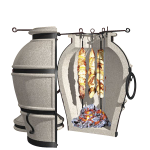
3. You will know your Tandoor is ready for cooking when the wood has burned down and there is no black soot on the inner walls. The walls of your Tandoor should look white. Uniformly rake the coals across the grate, to ensure even cooking. The preparation of your Tandoor is now complete and ready for cooking.

4. Once you have loaded your Tandoor, close the ash pit door opening with the cover and place the lids back on top of the Tandoor neck. Now you may sit back, relax and enjoy the ensuing aromas. At this point, you can envision yourself as a trader on the ancient Silk Road awaiting the completion of your delectable feast! You may click the “Preparation times” tab for an estimate of cooking times, however it is best to routinely check on cooking state of the items in your Tandoor.
Food
Estimated cooking time

3 – 5 minutes.

8 – 10 minutes.

10 – 12 minutes.

12 – 15 minutes.

40 – 50 minutes.

3 – 5 minutes.
Safety Precautions
- Avoid spilling any water or liquid inside the Tandoor – especially if the Tandoor is hot.
- In windy conditions during the initial heating process, the flames emanating from your Tandoor can rise to several feet high above the Tandoor neck, please exercise caution.
- While the Tandoor is not in use, it is advisable to store it in a water-proof location, such as a shed, garage, pergola or patio. Alternatively, you may cover the Tandoor.
- The Tandoor and metal work will reach extremely high temperatures during use which can cause severe and scolding burns. Please exercise extreme caution and make sure to use heat resistant gloves or oven mitts.
- Never leave children, elderly or physically/mentally impaired individuals alone with a hot Tandoor as this may lead to injury or severe scolding/burns.
- When using your Tandoor in extreme cold weather or if you have not used your Tandoor for a long period, heat it up gradually by starting a small fire and slowly adding additional wood. If heated too quickly in cold weather, the Tandoor may fracture.
Remember…
During initial operation of your Tandoor oven, hairline cracks less than 1mm in width may appear.
Once the Tandoor has cooled down, these cracks will become almost invisible.
The cracks do not affect the longevity, operational properties and structural integrity of the Tandoor, rather they act as thermal joints during heating that are necessary for the efficient operation of all ceramic ovens.
